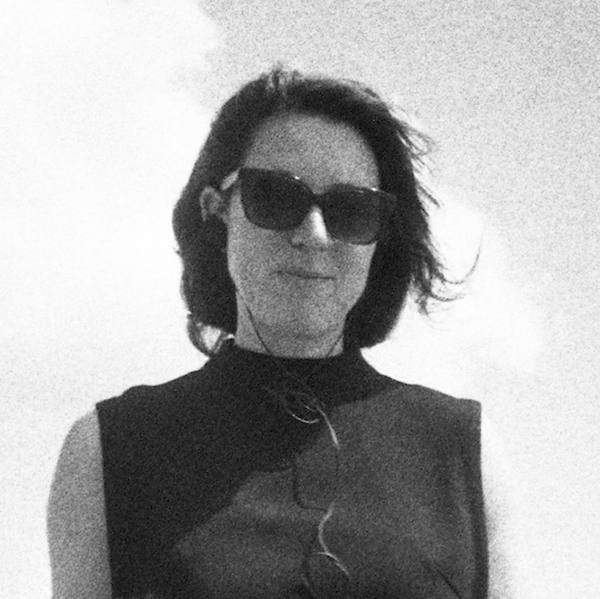Guest Album Review – “Fourth World Music Vol. 1: Possible Musics” by Jon Hassell & Brian Eno
This guest review was originally part of a music blog project I created called Under The Deer. Since that site won’t be around forever, I’m archiving these wonderful reviews and their accompanying illustrations here. Writer and illustrator listed at end of the review.
“Fourth World Music Vol. 1: Possible Musics” is a work of exotic beauty, merging influences from traditional music, jazz, and analog electronic composition into a hypnotic new form.
Hassell came up with the term Fourth World to signify the merging of third world traditions with first world technologies. A composer and trumpet player with an academic and classical background, he had trained with the European avant-garde composer Stockhausen and associated with the American minimalist innovators, Terry Riley and La Monte Young. He also studied with the same classical Indian vocalist that had influenced Young, Pran Nath, incorporating his curving Raga based tonal progressions into his trumpet style.
At the time when he made “Possible Musics” Hassell was thoroughly invested into his “North meets South” philosophy of music, in his terms merging the “above the belt” intellectual style of modern western composition to “below the belt” sensual rhythms. The use of the wah-wah pedal on the trumpet, inspired by Miles Davis, was just one of the methods he used to achieve this crisscrossing of his metaphorical equator – the waistline.
Hassell’s trumpet in Possible Musics is laden with chorus and harmonization effects, taking on the qualities of humans, spirits, and animals. The album begins with Chemistry, an invocation of these new combinations of sound and place. His breathy vocal trumpet sings out over Percy Jones twanging bass line. The sparse but grounding water-drop like percussion of the Ghatam (an Indian clay water jug drum), played by the Senegalese percussionist Ayibe Dieng and Brazilian Nana Vasconcelos, creates an ambiance of impending ritual from an unnamable location.
The ensuing low congas of Delta Rain Dream, evoke a gathering of rain dancers harnessing the clouds, while the deep-voiced-trumpet spirit calls from a distant valley. The delta in the title here could be about the Mississippi (Hassell hails from Memphis, Tennessee) or perhaps the Nile. Either way, this track leads brilliantly from the heavy swaying fecundity of lowlands into the close-quartered personal séance of Griot (Over Contagious Magic). Here a phaser on the trumpet transforms it into whinnying animal, bearing the listener into the spirit world. A small group claps hands, while small high-pitched electronic creatures of the evening alight on the wood of a creaking analog windowsill. Next, Ba-Benzele glitters with melodic interlocking synthesizer rhythms harmonized with interjections by the trumpet’s childlike calls. The track makes a direct reference to the music played by equatorial Pygmies on the Hindewhu whistle to harmonize with the forest.

Finally side one of the LP ends with Rising Thermal 14° 16′ N; 32° 28′ E, coordinates that indicate somewhere south of Khartoum on the White Nile, exactly what the cover of the LP depicts. The image, a Landsat photo from the NASA archive, is like the album: supersaturated and otherworldly. Here the trumpet sounds like its played by a howling wolf on a see-saw. In the background, the electronic insects are replaced by a field recording of crickets and birds in Altamira, Spain, the location of delicate 35,600-year-old petroglyphs.
Charm (Over “Burundi Cloud”) is the entire second side of the LP, where the elements introduced on side one play out as a longer-form conversation. Brian Eno’s modulating Minimoog becomes a slow-moving river where the trumpet, congas, ghatam, and drum samples float and dream, like reflections from the clouds. It’s an album that can gently accompany your world, or if you choose to invest your attention, invites you to explore a richly harmonic alternate universe.
“Possible Worlds”, released in 1980, represents a pivotal moment in music, with a coalescence of influences that was unique for the time. Hassell’s 1978 release “Vernal Equinox,” a rhythmic palimpsest of shifting trumpet dronescapes, had caught the attention of Brian Eno, who was in New York to produce the Talking Heads’ “Remain in Light.” Eno sought out Hassell at a performance at one of the city’s underground venues “The Kitchen,” igniting a friendship between Eno, Hassell, and David Byrne. Thus, it is no coincidence that the process and philosophy that went into this masterpiece, directly inspired the more well-known and pop-influenced Eno/Byrne collaboration, Life in the Bush of Ghosts of Ghosts, produced only ten days later.
Hassell also continued to produce his niche of experimental, ambient sound worlds driven by traditional rhythmics, but Fourth World Music Vol. 1: Possible Musics, is the matchless initiation that gently yet insistently prods awake the mind’s ear, by both design and circumstance.
Contributors

Alyssa Moxley is a writer and experimental composer. She mostly works with sound and field recordings to transform environments via live performances, compositions and installations.

Carol Cavaleiro is multidisciplinary designer from Brazil.